The best cup of coffee in Marin
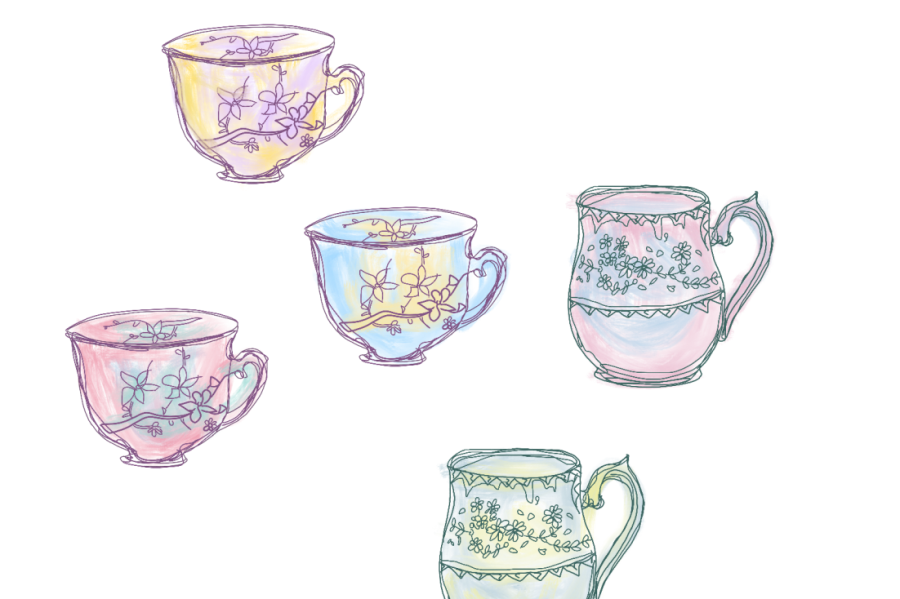
(Emily Stull)
Apr 19, 2022
Among the many things my junior year has gifted me, a notable takeaway from the notoriously stressful third year of high school is a cemented caffeine addiction, primarily coffee. I have come to terms with how much I enjoy coffee (more specifically, a vanilla oat milk latte – hot or cold, I’m not picky) and am completely dependent on it to get me through the day. I have decided, however, to put my coffee obsession to good use, and explore where I, and anyone else who shares my love for coffee, can find the best cup of it in Marin. Specifically, the best cup one can enjoy while braving Tam’s lunch rush. The 11:45 a.m. lunch break has become the time in which I realize how much I need a midday pick-up, after the rush for a good parking space has prevented me from having time to brew my own cup.
This topic is very important to me, so I made sure to bring in another connoisseur to aid me in my quest for good coffee and ensure that it contained no blind spots. I needed someone who would bring an equally passionate perspective to the table, a fellow expert whose area of expertise would provide the much-needed review for “real” coffee drinkers everywhere that I just cannot give. Luckily, there was one person I knew who was perfect for the job: a fellow Tam junior, Hannah Christensen, who, since I could remember, brought a full travel mug of black coffee to school every morning. A full travel mug. Black coffee. Nothing else in it. Not even a drop of vanilla syrup. Every. Single. Morning. With this knowledge in mind, and Christensen’s willingness to join me on my search, we set off to find the best cup of coffee (within a Tam lunch period-mile radius from school) backed by a balanced panel of two very qualified judges. And I am happy to report that, five cups, two sets of very jittery hands, and one certainty that I was either going to conquer the world or die from a heart attack later, Christensen and I have come to a consensus. Sort of.
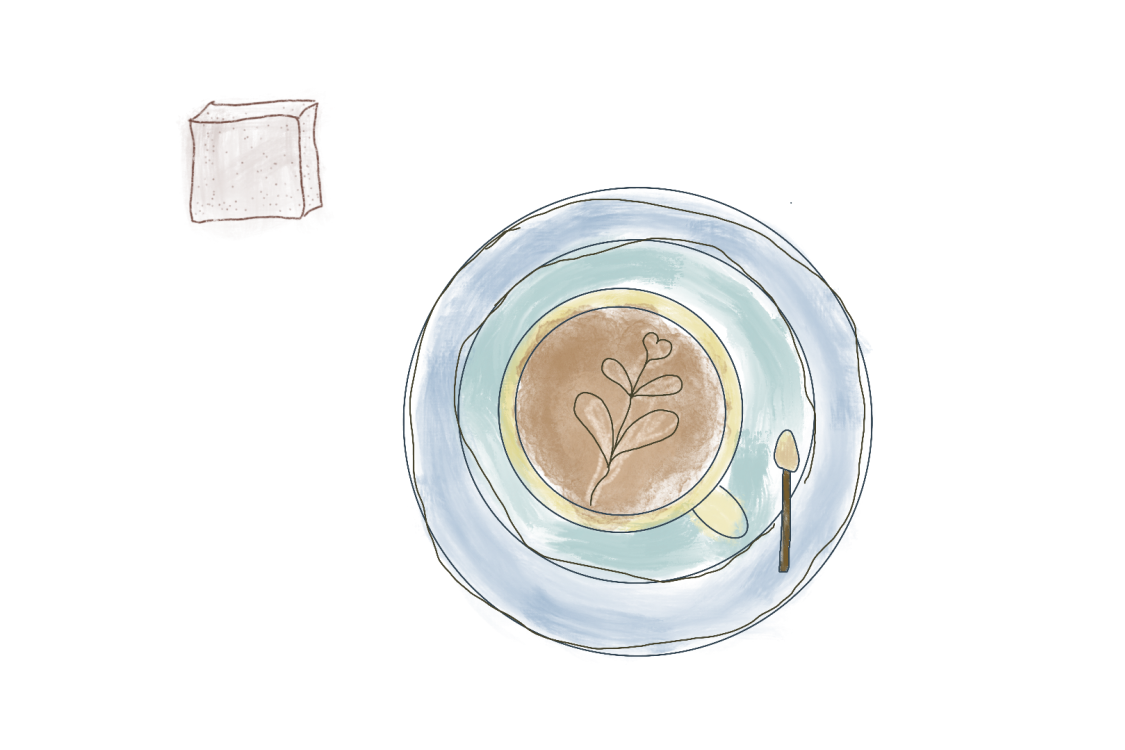
To start with what we agreed on: the infamous Starbucks. It is the world’s largest coffeehouse chain and is given much credit for the rise of the second wave of coffee culture. Starbucks’ mission, according to their website is “To inspire and nurture the human spirit – one person, one cup, and one neighborhood at a time.” This all sounds very nice, and the hold Starbucks has over my demographic (13 to 18-year-old Marin girls) is not to be understated, but their coffee still sucks. Or, as Christensen, who favors a much stronger, more flavorful blend than I do, believes: “It doesn’t even taste like coffee at all.” To clarify, we did have to order a latte with whole milk from our five coffee shop candidates to compromise my qualms about drinking black coffee and Christensen’s opposition to vanilla sweetening.
Even for me, Starbucks’ coffee was barely coffee. We ordered from the location closest to Tam, its store on Camino Alto. I admit the Starbucks in Strawberry Village provides a much more enjoyable experience, due to the lack of middle schoolers and underclassmen crowding around it. Nonetheless, the taste of Starbucks coffee was just as unfortunate as the sight of the 12-year-old boys on e-bikes narrowly missing parked cars right outside of it. At the lowest price point of all five candidates we tried ($3.95 for eight ounces), Starbucks did not deliver. The latte was a shade closer to milk than coffee and had so much ice in it that the price point might be skewed due to the lack of actual liquid inside the cup. The flavor of Starbucks coffee is bland and is worth nothing compared to all other candidates, in both Christensen’s and my opinion.
My personal theory is that Starbucks extracts the flavor out of its coffee, which does end up appealing to its broad audience, but also diminishes the flavor profile and character of the beans. Whereas, at every other place we went, the drinker can taste notes of unique flavors in the coffee. In all, Starbucks coffee rated four out of ten for me, and a dismal two out of ten for Christensen. We both agreed that our “coffee shop environment rating” was a four out of ten on weekends and a two out of ten on school days (when you have to make sure a boy on an e-bike doesn’t knock your order out of your hand).
Our next candidate was also a member of a large chain, but arguably one that tries its best not to appear as part of one: Peet’s Coffee. Peet’s is a local coffee chain, born in Berkeley. Their claim to fame was an introduction of darker roasted coffee in blends like the French Roast and grades appropriate for espresso drinks to a large scale audience. Along with finding the niche middle ground between being a cheaper chain and serving gourmet coffee, Peet’s also has made more attempts to be sustainable and conscious of the people who farm its major product; a responsibility Starbucks has struggled with.
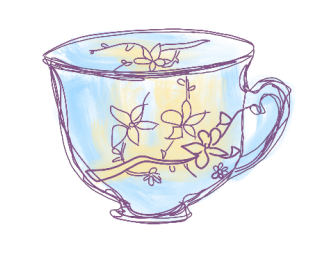
Christensen and I visited the location on Throckmorton Avenue, a member of the Peet’s-Equator-Depot caffeine triangle that sits in downtown Mill Valley. We ordered our eight-ounce latte for $4.25. As we waited, we found the environment of Peet’s to be fitting for Bay Area coffee shops (millennials on nonstop work calls and millennials stopping by after their mid-morning bike ride). We both agreed that our coffee shop environment rating rested around a six out of ten. The taste of the brew, however, was anything but expected. First of all, our coffee came in a holiday-themed cup (complete with Christmas trees and holly), despite it being mid-March. As for the flavor, the first sip hits you like a “little punch,” as Christensen put it. She described the notes of the coffee as strong, flavorful, hardy, and very earthy. As she enjoyed the cup that tasted well-made, I slowly adjusted to the intense flavor, and eventually enjoyed it after a few painful sips. Due to adjustment time, my rating was one point below Christensen’s seven out of ten, but we agreed that Peet’s blend was great for strong coffee lovers, who also are partial to an affordable price point.
Christensen and I then took the short, crosswalk-long stroll over to Equator, which sits on the corner of Miller Avenue and Throckmorton Avenue. We were greeted by a large group of toddlers and Goldendoodles as we walked into the open doorway. The shop is an intensely Mill Valley scene, the collective of small dogs, Marin moms, and curated decor gained a seven out of ten on our environment rating scale (some point deductions were due to the fact that, at both Equator and Peet’s, a customer would most likely have to pay for their parking if they were not out walking their Goldendoodle). According to its website, Equator was created in 1995 with the vision that “Coffee can be roasted better, brewed better, and most importantly, it can be sourced in a way that makes lives better.” The taste certainly made my life better. After two eight-ounce semi-disappointments, one flavorless and one a little too flavorful, Equator’s 16-ounce latte was just right for my sensitive taste buds. They only offer one size (our latte priced at $5.25), and I enjoyed every sip. Its flavor was distinctive, containing unique nutty undertones chilled by a perfect amount of (noticeably fancy looking) ice. The service was also impressive. Equator was the busiest of the stores we tried, but managed to make our coffee faster than Starbucks and Peet’s even while dealing with the dense populations of animals and children. I enjoyed Equator’s balance of flavor and sweetness, and felt it deserved every point of my nine out of ten rating. More partial to a bitter, stronger blend, Christensen felt Equator’s cup deserved an eight. Still very good, but not the ideal cup for “real” coffee drinkers who are in favor of a stronger cup of coffee. However, for coffee wimps like me, Equator’s unique, high-quality flavor was perfectly intense.
Christensen and I left the Caffeine Triangle, skipping the Depot to avoid putting any more money in the meter. We felt unmistakable jitters from our misguided experiment, suitable to brave the Tam Junction traffic, so we set out to taste what Red Whale Coffee had to offer. Like Equator, Red Whale serves one size only, has impressive red-themed branding and merchandise, a clear and commendable attempt for a specific coffee “experience,” and a cult-like Marin following. But unlike Equator, Red Whale draws a less Goldendoodle-centric demographic. The first location opened in 2003 with a unique “custom cooking method” (opposed to roasting) that the company claims prevents overcooking (or burning) the beans while ensuring that the final product is left with plenty of caffeine.
While I can’t comment on the importance of roasting versus cooking, I am sure that Red Whale has managed to create a great coffee shop environment amidst the fever dream of Tam Junction traffic patterns. The store is complete with pinball machines and the most seating of all the other candidates, with chairs and booths that remain true to its red color palette as well as its throwback feel. Red Whale also felt the most local and not chain-like, in the Northern California, surfer, camper vein, whereas Equator felt local in the modern Marin, Range Rover mode. The service was personable; one of the employees taught me how to set up my new debit card (I am forever grateful) as another made our order before the $5.75 transaction even went through. The latte was the only one that came with the coffee separated from the milk, an ombre effect I enjoy visually and as I get to feel like I’ve done something while I mix the two parts of my drink together. Unfortunately, for Christensen and me, but fortunately for Mother Earth, the coffee came with a (Red Whale logo adorned) paper straw. I’m all for reducing plastic waste, but my commitment wavered as my straw began to biodegrade in my mouth.
Regardless of paper straws and rising global temperatures, Red Whale makes a solid cup of coffee. Very solid for Christensen, as it was not very sweet, and very earthy. I agree that Red Whale had a specific flavor, possibly due to the cooking of the beans, and also that its earthiness was not as overpowering as the hardiness of Peet’s coffee. I did not feel “punched” by Red Whale, but still was reminded of why I get vanilla syrup in my lattes. Christensen’s coffee score was an eight out of ten, and mine was a seven.
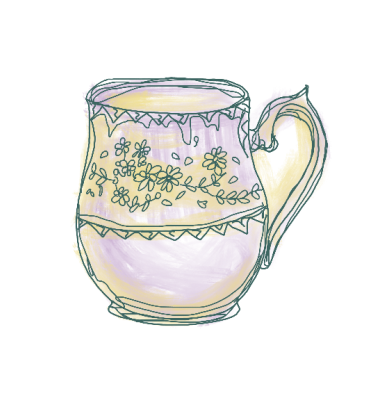
Lastly, and mostly just for the rumored Paris-like beauty, Christensen and I ordered a cup from Le Marais Bakery (one that I almost spilled multiple times due to the shakiness of my coffee-filled body). The bakery completely fulfilled its promise of Parisian café perfection (something I learned that I was extremely susceptible to). The woman who took our order had a French accent, it was the only place where we could sit down and get a non-to-go cup, and Le Marais was just the epitome of a real café. This makes sense, as its first location was opened in San Francisco in 2013 by Patrick Ascaso, who aimed to recreate the feel of the boulangerie of his childhood in Arpajon, France. This vision definitely came to life in Le Marais’s East Blithedale location, a ten out of ten for both Christensen and me in terms of its exquisite coffee shop environment, which served us a beautiful cup of foam-pattern topped coffee that tasted, to me, like my ideal cup.
It cost $4.20 for a size of 12 ounces for a happy-medium ratio of drink size to price that I had felt was missing from our previous candidates, and also found my personal happy-medium between sweetness and coffee flavor. Le Marais’s beans had a flavor that seemed intentionally sweet, not due to dilution from milk nor lack of roasting (or cooking), but still managed to please Christensen’s mature coffee palette. According to her, the coffee was very sweet, but not overly sweet. She enjoyed that it still contained a high-quality coffee flavor, but was just sweeter than the other ones. Considering the light, delicate flavor, Christensen’s eight rating was quite the stamp of approval, and my ten out of ten rating was no exaggeration, nor was it influenced by the Parisian setting. I finished my entire cup to my coffee-filled stomach’s surprise.
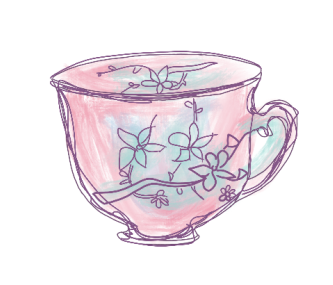
Le Marais had my heart the moment it transported me across the Atlantic Ocean. I found the French café to be the best place for those of us who rely on caffeine to survive, while also adding amendments of oatmilk, mocha, caramel drizzle, and so on when placing our orders. For those like Christensen, who can ingest day-old, liquid coal without batting an eyelash, but would rather get a fresh cup that packs an enjoyable punch, she recommends Red Whale. We agreed that Equator was a close second (and a much smarter choice than Le Marias in terms of Tam lunchtime parking constraints). Starbucks was a clear last, as it barely qualified as coffee. (Brightly colored non-coffee Starbucks drinks, however, still hold a special place in my 13-year-old heart.) With five cups of all that the world of Marin coffee had to offer in our stomachs, Christensen and I concluded our coffee adventure feeling quite successful, but mostly quite sick.



